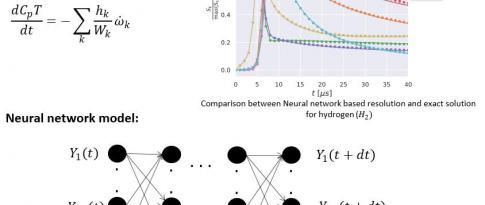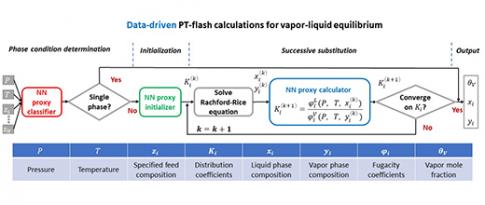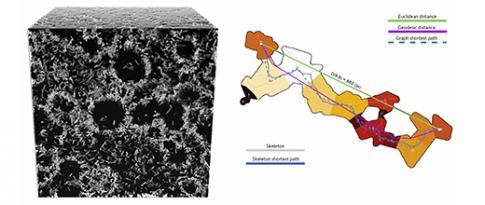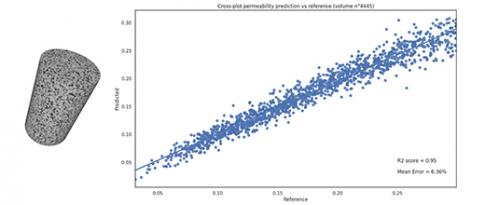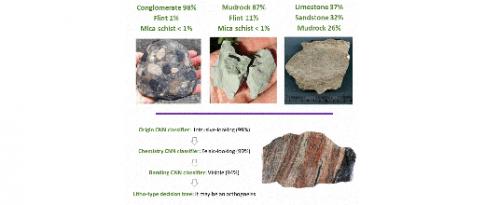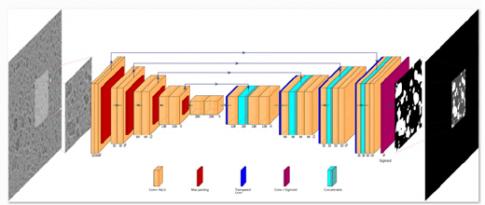21.06.2021
15 minutes of reading
When Machine Learning reached maturity in the 2010s, with the advent of deep learning, the scientific landscape, across all fields, was profoundly altered, marked by the availability of mass data.
And the impact is now being observed in the field of numerical simulation. But Deep Learning is more than a highly powerful regression method and should also be considered as the nucleus of Differentiable Programing1. The enlightened deployment of this approach, in conjunction with traditional methods used in the target fields, paves the way to rapid scientific progress.
Today, the fact is that complex physical, mechanical, chemical, biological and artificial systems are confronted with massive quantities of data,
• be it input data, generated by cheap sensors, which can be found everywhere;
• or output data, generated by numerical simulations of mechanistic models, which are now mature in many fields.
We are thus able to take advantage of both ends of the chain: from the integration of real-world data into existing ODE and PDE2 mechanistic models through to the derivation of entirely new models, directly from real data, respecting the known properties of the system under consideration3.
This special issue illustrates how IFPEN is taking advantage of this revolution, combining its existing expertise with creativity to develop innovative solutions.
Marc Schoenauer, INRIA-Saclay
Member of IFPEN's Scientific Board
1- Combining Machine Learning and numerical optimization
2- Respectively: Ordinary Differential Equation and Partial Differential Equation
3- For example, the conservation of mass, energy dissipation, geometric invariance, etc.
Acceleration of chemical kinetics calculations through Machine Learning methods
Numerical simulations are now widely employed in the industrial world to help design systems and predict complex phenomena. Reactive flow simulation, for example, is important for numerous applications, such as vehicle and aircraft propulsion and processes in the chemicals industry.
Faster “flash” calculations thanks to deep learning
A large number of simulators, whether they relate to the design of reaction processes, the evolution of oil reservoirs or combustion systems, require access to thermodynamic properties. In order to provide these properties, IFPEN has been developing a library of calculation modules, called “Carnot”, named after the famous French thermodynamics expert. These calculations, in particular those concerning phase equilibrium (also known as flash calculations), generally require the use of substantial calculation resources due to the complexity of the systems considered, and represent in many cases the most time-consuming step in the simulation process.
Numerical design based on the analysis of multi-scale porous material microstructures
The design of high-quality porous materials is a major challenge for the energy efficiency of industrial processes in the fields of catalysis and biocatalysis and separation and purification operations. For such applications, these materials derive their properties of interest from their specific microstructure, incorporating a large quantity of empty spaces that are organized and connected on a nanometric scale. IFPEN and Saint Gobain Research Provence (SGRP) joined forces to acquire a tool that will ultimately facilitate the development of porous materials optimized for given usages.
Digital Rock Physics at IFPEN
Today, characterization of geological reservoirs, a long-standing theme in petroleum exploration, becomes a base of interest for a variety of applications, such as CO2 and hydrogen storage as well as geothermal energy. In recent years, the combined use of 3D microtomography (or micro-CT ) imaging and advanced simulation techniques has allowed the emergence of a digital approach to computing the petrophysical properties of reservoir rocks (Digital Rock Physics). This represents a real complement - and in some cases an alternative - to traditional laboratory measurements.
Artificial Intelligence-assisted interpretation of geological images
Over the last decade, deep learning applied to image analysis has rapidly developed in scope to cover numerous fields. However, its potential remains underexploited in geology, despite the fact that it is a discipline that relies to a large extent on visual interpretation. To contribute to the digital transformation of industries related to the underground environment, researchers at IFPEN have implemented deep learning in three “profession-specific contexts”, each involving different types of geological images.
Semantic segmentation through deep learning in materials sciences
Semantic segmentation conducted on microscopy images is a processing operation carried out to quantify a material’s porosity and its heterogeneity. It is aimed at classifying every pixel within the image (on the basis of degree of heterogeneity and porosity). However, for some materials (such as aluminas employed for catalysis), it is very difficult or even impossible using a traditional image processing approach, since porosity differences are characterized by small contrasts and complex textural variations. One way of overcoming this obstacle is to tackle semantic segmentation via deep learning, using a convolutional neural network.






